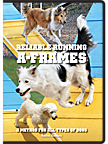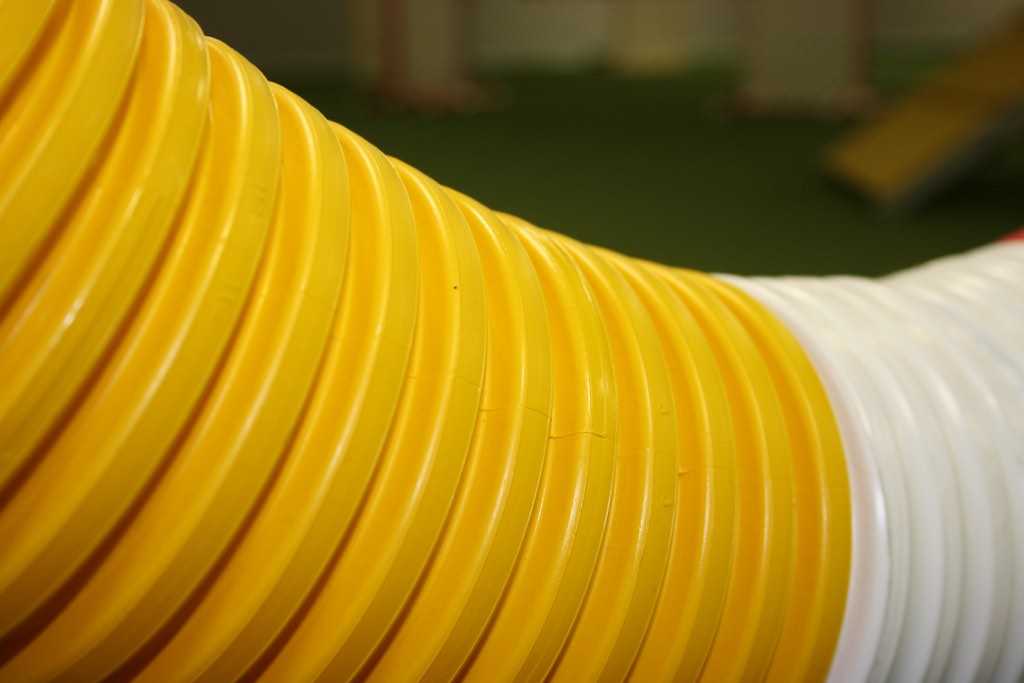Rachel Sanders' Reliable Running A-Frames DVD
27 Nov 2008
I just watched Rachel Sanders “Reliable Running A-Frames” Two DVD Set and was really impressed.
 This is the state of the art for teaching a running A Frame. Rachel's methodology is well conceived and in the DVD she presents a thoughtful step by step approach taking you and your dog from the beginning to the end. She covers both retraining dogs with existing non-running A Frames and dogs new to the equipment. I found the case studies and "debugging" sections particularly informative.
This is the state of the art for teaching a running A Frame. Rachel's methodology is well conceived and in the DVD she presents a thoughtful step by step approach taking you and your dog from the beginning to the end. She covers both retraining dogs with existing non-running A Frames and dogs new to the equipment. I found the case studies and "debugging" sections particularly informative. I first learned of Rachel’s running A Frame method from Dana Pike. Rachel and Dana are friends and when Rachel was developing this idea Dana also started playing around with it. I had been unhappy with how Meeker’s 2o2o looked (he was hitting too hard on his front end: watch the video in my Stride Regulators article) so I was thinking of switching to a running A Frame. So with Dana’s assistance I followed this approach. I also attended a seminar at Dana’s (that I never got around to blogging about) where Rachel presented her method. The DVD includes some important refinements on the basic approach I’d been using.
Method Overview
So if you haven’t read the Clean Run article or seen this method yet the general idea is to use a PVC square/box a little smaller than the A Frame contact area as a target into which the dog is trained to pounce/jump straight in and straight out. In the video Rachel starts training the box on the ground both with and without a clicker. It is nice to see an accomplished trainer make and acknowledge a couple minor errors in her clicking. She then perseveres and works through the inadvertent clicks. Even the pros are human :^) That makes me value this video even more, it answers questions like “what do I do if I accidentally reward an incorrect behavior?“.
A key aspect of Rachel’s training is to keep the influence of the handler out of the behavior. She works six positions around the box and wants the dog comfortable performing the behavior before moving on. She gives troubleshooting examples at each step of the progression.
Once the dog is happy pouncing straight in and out of the box she sets up a two jump grid with the box as the final obstacle in the grid. I had heard she was doing this but it wasn’t part of her methodology when she first introduced it. This is a really smart idea that allows her to work through many training scenarios and problem solving situations without running the dog over the A Frame hundreds of times. I know from training with her, that Rachel is very concerned with the impact (figurative and actual) the sport puts on dogs during training. This is a great situation where doing the right thing for the dog also gives a much better training progression. Again she provides a thorough step by step progression and troubleshooting examples for this section.
After the dog can perform the behavior on the jump grid, she moves the box to a low A Frame. She uses backchaining to train the full sequence on the low A Frame. Handler motion is also gradually introduced. Once the full sequence can be performed from all handler positions, she starts raising the A Frame. She demonstrates all of this in detail with case studies showing different sized dogs and how she addresses their particular issues.
The final steps in the progression are fading the box and then adding in handling on the approach and exit of the obstacle. Of course examples are shown. Rachel also devotes a segment on “breaking” the 2o2o for already trained dogs that will be helpful for folks like me who have dogs with stopped contacts.
Recommendation? Buy It!
I strongly recommend anyone considering a running A Frame get this DVD. There is a lot of well organized information outlined and then demonstrated in it. As Rachel states it takes some dedication to work through the progression but almost every dog can be trained to do it. In our area there are a number of dogs trained with her method with very nice, fast running A Frames…
If you enjoyed this article won't you please:  Thanks!
Thanks!
Related Tags
Related Articles:
- Dana Pike, Mary Ellen Barry and Rachel Sanders Fall Maintenance Camp
- Fast Forward Dog Sports - Rachel Sanders
- Fall Maintenance Camp: Barry, Carter, Moureaux, Pinder, and Sanders
- Spark's Running Dog Walk Practice - Raised Plank
- Running A Frame - "Nerd Box"
- Lori Michaels: Running with Blinds or blindly running?
